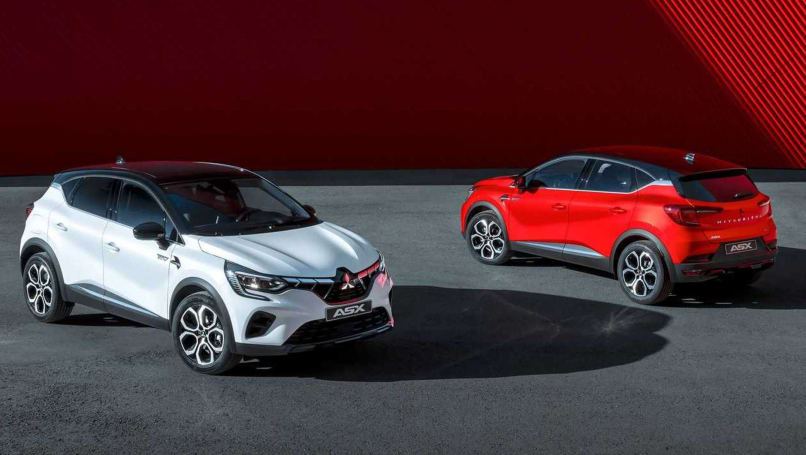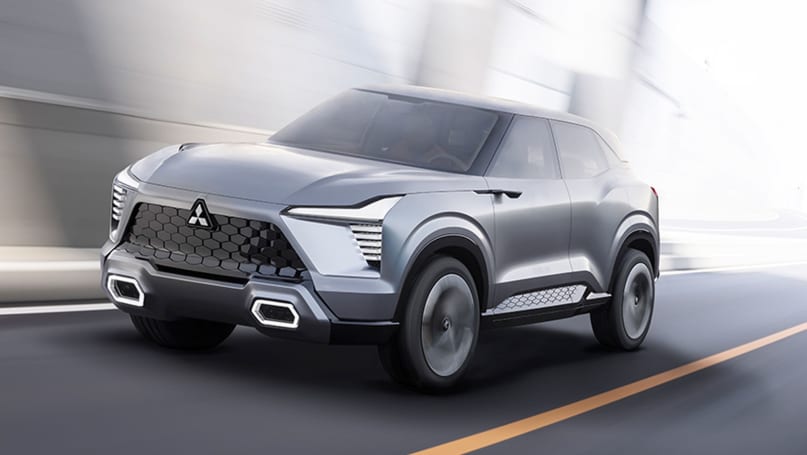
2025 BYD Shark 6 sales scrutinised as rival Kia Tasman ute and plug-in hybrid Ford Ranger PHEV and GWM Cannon Alpha launches loom
BYD Shark 6 fever has well and truly swept over the country, but is it all as...
Browse over 9,000 car reviews

Mitsubishi is a brand at a crossroads. As its place in the alliance it shares with Nissan and Renault becomes more clear, it plans to rejuvenate its ageing catalogue with 16 new global models in the next few years. One notable exclusion is the popular ASX small SUV - at least as we understand it.
The current car is approaching its 13th year on sale after a whopping four facelifts, but remains a staple in Mitsubishi’s Australian line-up.
Low prices and short waiting lists help it remain front of mind for Aussies, but question marks remain over how much longer it can continue, and whether it will have a true successor.
A so-called ‘second-generation’ ASX, in fact, already exists but it is a re-badged Renault Captur for the European market complete with Renault engines and even plug-in hybrid systems and, thus far, Mitsubishi Australia hasn’t expressed interest in importing it to Australia.
Speaking to Australian media in Japan, it was evident the brand had not yet decided on the fate of the ASX nameplate in Australia, but admitted the current car’s days are numbered.
“I cannot say exactly, [but] no product can last forever,” said Koichi Namiki, Executive Officer of Product Strategy.
Will Mitsubishi come up with an entirely new ASX then? “Not likely,” said Namiki, who was quick to point to the list of upcoming new-generation Mitsubishis outlined in the brand’s mid-term business plan.
One potential successor, a concept which will turn into a production car dubbed the XFC, seems to mirror the current ASX in spirit. Namiki said this model was a possibility, but it was primarily being developed for South East Asian markets like Thailand, where Mitsubishi remains a very strong player.
He also noted the XFC was being developed as part of Mitsubishi’s family of combustion cars which will continue to play a significant role despite its move toward what it calls xEVs, which includes everything from hybrids (HEVs) to fully electric (EV) vehicles, suggesting a production XFC was not planned to launch with an electrified drivetrain.

“There’s not one choice for us,” explained Namiki. “Again we haven’t decided that ‘we’re going to do this one’. One option is to use the product from the South East Asian region if it works, or we can utilise some of the alliance vehicles. In the future we would like to have an attractive line-up in Australia - we just haven’t come up with a concrete one.”
Executives were concerned some models would need to be specced up to fit the high safety and spec requirements of the Australian market, factors which could ultimately rule them out, and force it to turn to options like the rebranded Captur.
“I think the product itself is a good one,” Namiki said. “So far customer and dealer perceptions [in Europe] have been good.”
One thing Namiki was certain about is reducing Mitsubishi’s Australian line-up to just Outlander, Triton and Pajero Sport was not good enough, and despite what seems to be clear-cut plans, he said SUVs were the most important vehicle type to the brand and there would be something to replace the ASX when the time comes.

“Of course not, we’re not assuming a gap,” Namiki said. “It’s difficult to say [the timeline] for now, but basically we’re not assuming there will be a gap [to replace] products in our Australian line-up.”
Also uncertain, even with the context of Mitsubishi’s business plan, is a replacement for both the Eclipse Cross and Delica, which, like the ASX, share a relatively ancient platform.
Namiki said the brand currently didn’t have a “concrete plan” for the future of the Eclipse Cross nameplate, while other executives said a decision had not been made on the next-generation Delica people mover either, which moves limited numbers, pretty much all focused on the Japanese domestic market. Export markets like Australia could be the Delica’s only hope.
So, what can we expect from Mitsubishi, at least on the SUV front? The mid-term plan outlines three new two-row SUVs both a battery electric and a hybrid, the combustion-based XFC, as well as a primarily combustion-based three-row SUV. All of which are yet to have their production versions revealed. Watch this space.
Comments